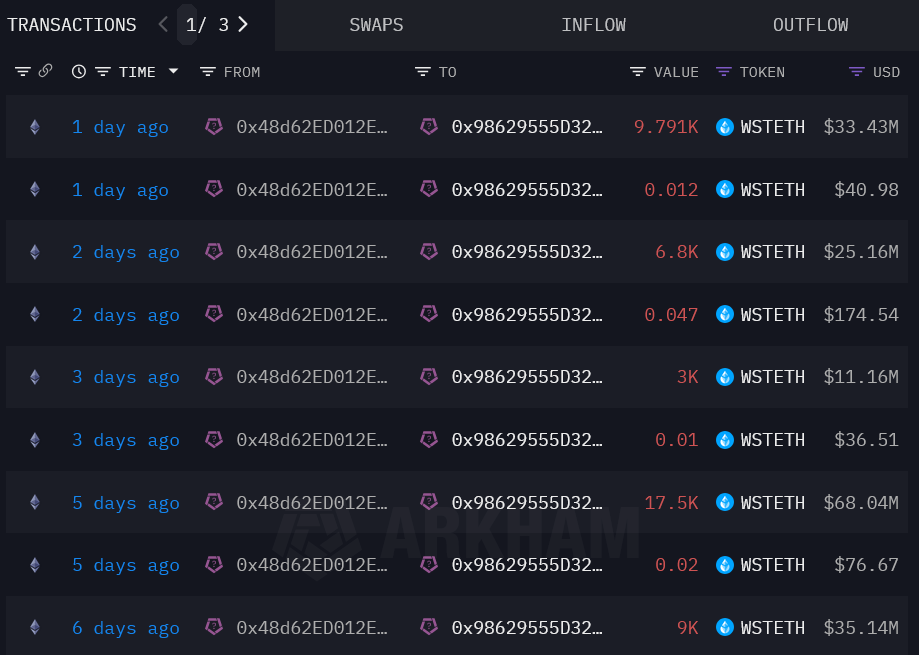The cryptocurrency market, which started 2024 with soaring prices and high enthusiasm, is now in the throes of a dramatic downturn. August has seen an unprecedented surge in liquidations. The fallout has been substantial; a total of $1.12 billion was liquidated in the first seven days of the new month, according to CoinGlass.

The impact on the market has been significant. The leading cryptocurrencies were particularly hard hit, with Bitcoin dropping below $50,000 and Ethereum falling below $2,300, levels not seen since January. Data on NairaMetrics show that the market capitalization of all cryptocurrencies also took a hit, dropping by 17.1% to $1.86 trillion between August 5 and 7. Open interest across the crypto market has plunged by 18.7%.
What is Driving these Liquidations in the Crypto Market?
The growing fears of a US recession have been one of the primary drivers of this wave of liquidations. This anxiety was triggered by underwhelming job market data, showing only 114,000 new jobs added in July, significantly below the expected 175,000. This weak performance, the worst since last December, has fueled worries about an economic slowdown.
The global stock market is also showing signs of instability, adding to the turmoil. High-profile investors like Warren Buffet have significantly reduced their holdings. Buffet reportedly sold off nearly half of his Apple stocks during the second quarter of the year, sending shockwaves through the market and further unsettling investors.
Compounding these issues, the Bank of Japan recently decided to raise its key interest rate from 0% to 0.25%, the first increase in years. Investors had been capitalizing on Japan’s ultra-low interest rates by borrowing yen at minimal cost to invest in other assets. However, the rate hike has made these leveraged positions more expensive to maintain, leading to a rapid unwinding of investments.
This series of events has created broader market instability, including a sharp decline in the US stock market. Consequently, Bitcoin and other cryptocurrencies have also been affected as investors rush to liquidate assets to cover their losses.
Furthermore, unusual sell orders on major exchanges like Kraken, Gemini, and Coinbase hint at coordinated actions by large players, with Jump Trading being a notable one.
Reports indicate that, Jump Trading, a trading firm, offloaded substantial amounts of Ethereum. They reportedly moved $315 million worth of staked Ether to Binance, OKX, Coinbase, Bybit, and Gate.io in a series of transfers that started on July 24, just a day after the launch of spot Ether exchange-traded funds in the U.S.

Speculation is rife that these trades might be part of a liquidation process as Jump Trading prepares to shut down its crypto operations. This move follows the resignation of their former CEO amid an investigation by the United States Commodity Futures Trading Commission.
This massive sell-off, combined with actions from other large sellers, has put even more downward pressure on the crypto market. When a major player like Jump Trading unwinds its positions, it can trigger a chain reaction. This domino effect highlights the fragility of the market and the outsized influence of large participants.
Additionally, rising geopolitical tensions in the Middle East, particularly the ongoing conflict in Gaza and recent Israeli military strikes on 40 sites in Southern Lebanon, are stirring up significant market uncertainty. These developments have made investors jittery, leading to a noticeable drop in demand for cryptocurrencies and a subsequent dip in their prices. As they seek refuge in safer investments, investors are pulling their money out of volatile assets like crypto.
What are Stakeholders Saying?
Anndy Lian, a leading expert in blockchain and intergovernmental relations, links the current market downturn to the growing overlap between traditional finance and cryptocurrencies. “As the lines between traditional and crypto markets blur, disruptions in one can send shockwaves through the other,” Lian told Decrypt. According to him, unusual movements in either market ripple through various sectors and amplify market volatility.
Meanwhile, Tristan Dickinson, CMO of exSat Network, emphasized the impact of global macroeconomic shifts and how worldwide events are affecting the crypto space. “Bitcoin isn’t shielded from global macroeconomic shifts. The Nikkei’s 12% drop, alongside the Dow Jones, S&P 500, and Nasdaq’s poor performance, is fueling fears of a global recession,“ Dickinson also told Decrypt. He also mentioned the real threat of global conflict is adding to investor unease.
Dickinson warned that August and September are typically sluggish months, hinting at possible sideways movement and further tests of Bitcoin’s support levels.
However, despite the current market turbulence, some analysts are holding onto a glimmer of hope. Charles Edwards, founder of Capriole Investments, suggests that if Bitcoin holds the crucial $52,000 level, it might spark a market rebound. If not, the next support could be around $44,000. Crypto trader Bitcoin Jack also hinted at a potential retest of the market’s parabolic channel’s lower boundary, suggesting that a bottom might be near.
Wrapping Up
The recent surge in liquidations in the crypto market serves as a stark reminder of the volatility and interconnectedness of global financial systems. While the immediate outlook may seem challenging, with prices dropping and investor sentiment shaken, it’s important to view these events in the broader context of the cryptocurrency market’s evolution.
The factors driving these liquidations—from macroeconomic concerns to geopolitical tensions—highlight the crypto market’s growing maturity and increasing correlation with traditional financial markets. This integration brings both opportunities and risks, as evidenced by recent market movements.
As the market navigates through this turbulent period, it will be crucial for investors, traders, and stakeholders to remain vigilant and adaptable. The perspectives shared by industry experts suggest that while caution is warranted, there’s also potential for recovery and growth.
Looking ahead, the crypto market’s resilience will be tested. Its ability to weather this storm and potentially emerge stronger will depend on a complex interplay of economic, technological, and regulatory factors. As always in the dynamic world of cryptocurrencies, change is the only constant, and today’s challenges may well pave the way for tomorrow’s innovations and opportunities.
Disclaimer: This article is intended solely for informational purposes and should not be considered trading or investment advice. Nothing herein should be construed as financial, legal, or tax advice. Trading or investing in cryptocurrencies carries a considerable risk of financial loss. Always conduct due diligence.
If you would like to read more market analyses like this, visit DeFi Planet and follow us on Twitter, LinkedIn, Facebook, Instagram, and CoinMarketCap Community.
“Take control of your crypto portfolio with MARKETS PRO, DeFi Planet’s suite of analytics tools.”





















